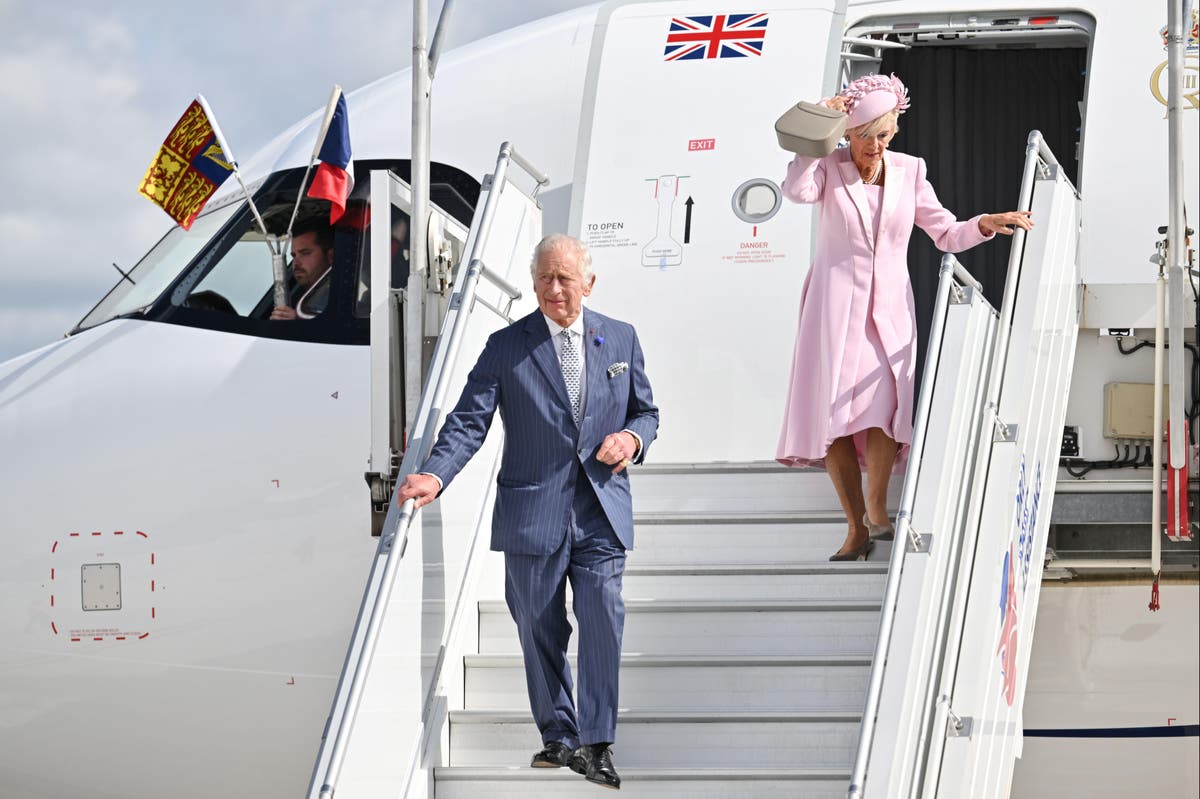Windows of plane used by King Charles fell out mid-flight after the frames were melted by lights
A loud noise was heard shortly after take-off when the aircraft was at 14,000ft


Sign up to Simon Calder’s free travel email for expert advice and money-saving discounts
Get Simon Calder’s Travel email
The windows of a plane once used by King Charles fell out, due to their frames melting because of filming which took place the day before.
The incident happened soon after the Titan Airways Airbus A321-253NX, departed from London Stansted Airport on 4 October 2023, and details have been shared in a report published by the Air Accidents Investigation Branch yesterday.
The report’s synopsis outlined: “A cabin window was seen to be loose shortly after take-off and several windowpanes were missing after the aircraft landed. The windowpanes fell out because they had been damaged by infrared energy emitted by high-intensity lights during a filming event the previous day.”
There were 20 people on board the aircraft during the flight, including crew and passengers, and it’s been confirmed that nobody was injured. As well as King Charles and Queen Camilla travelling on the aircraft for a state visit to France in 2023, it had also been previously used by Rishi Sunak and Foreign Secretary James Cleverly.
The report states that after “cabin noise loud enough to damage your hearing” was heard, although “there were no abnormal indications on the flight deck and the aircraft pressurisation system was operating normally,” an engineer inspected the plane at 14,000ft. Following this inspection, a decision was made to return the aircraft to Stansted and all those on board were told to use oxygen masks if necessary.
While there only appeared to be an issue with one window during the flight, the AAIB report says: “Having parked and shut down, the crew inspected the aircraft from the outside and saw that two cabin window assemblies were missing and a windowpane and seal were dislodged on a third window.”
Filming for an advert took place the day before the incident, with floodlights being shone on the windows to replicate a sunrise. It’s outlined in the report that after being shone on the right side of the jet for five hours, the lights then “illuminated a similar area on the left side for approximately four hours”. An inspection found that the high temperature of these 72,000W lights had melted the rubber seal surrounding the windows.
A spokesperson for Titan Airways told The Independent: “We would like to thank the members of the AAIB team for their extremely thorough and professional investigation. The aviation industry as a whole will benefit from the lessons learnt from this event.
“We are also pleased to hear that our colleagues at Airbus will be circulating further information to its worldwide customer base, highlighting the potential damage that can be caused by high-intensity lighting. We are also grateful to all our crew members onboard, whose swift and professional handling of the incident was exemplary.”

 Tfoso
Tfoso 
































